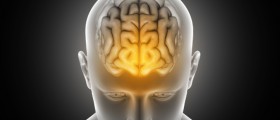
What is Migraine?
Migraine is a seriously incapacitating medical condition, and a person suffering from migraine experiences severe headaches and nausea. This condition is about 3 times more common among women than among men. In most cases, women suffering from migraine don’t experience these severe headaches while being pregnant, but migraine might also get worse from pregnancy.
The exact cause is still a mystery for the scientists, but there are several current theories. The most common of these, includes the problem related to serotonin control system. Migraine might be triggered by various things, including stress, tiredness, hunger or presence of monosodium glutamate (MSG) in food.
Migraine Types
There are many types of migraine, including the migraine with and without an aura, basilar artery migraine, abdominal migraine, nocturnal, ocular and hemiplegic migraines. Facial, status and ophtalmoplegic migraines are also some of the forms of these severe headaches.
Migraines with and without an aura are considered as major types of migraine headaches. Only one factor can be useful in differentiating the two major types of migraine, and this is the presence of an aura. Aura is a sign for a person that the migraine is on its way. It can be a visual aura, where a person experiences bright light, and blind spots in the visual field. An aura can also be tactile, and the person affected by it feels something, usually a tingling in a specific part of the body and can predict the upcoming migraine. In most cases, an aura happens about 30 minutes before the actual migraine starts. Most migraine sufferers can’t predict the attack, simply because more than 80% of them don’t have any aura signs.
Children suffering from migraine usually experience abdominal migraine, which is also known as periodic syndrome. These kids experience both abdominal pains and migraines, and none of these conditions ware caused by some gastrointestinal problem.
Bickerstaff’s syndrome or basilar artery migraine mostly affect young women, and is associated with dizziness, balance problems, double vision, vertigo, speech difficulties and sometimes unconsciousness.
Nocturnal migraines affect the people while sleeping and provoke waking up. Usually, adrenalin is the cause of this type of migraines.
Ocular and ophthalmoplegic migraines are sometimes mixed for one another, since both have something with eyes. It can be either the pain located behind the eyeballs or vision problems that precedes the migraine.
Pain located around the jaw or the neck is also known as facial migraine, while status migraine is the one that lasts for more than 3 days. Migraine sufferers that experience status migraine have to be hospitalized.
Hemiplegic migraine is very rare, but it may cause a patient to feel temporary paralyzed and suffer from migraine.















Your thoughts on this
Loading...